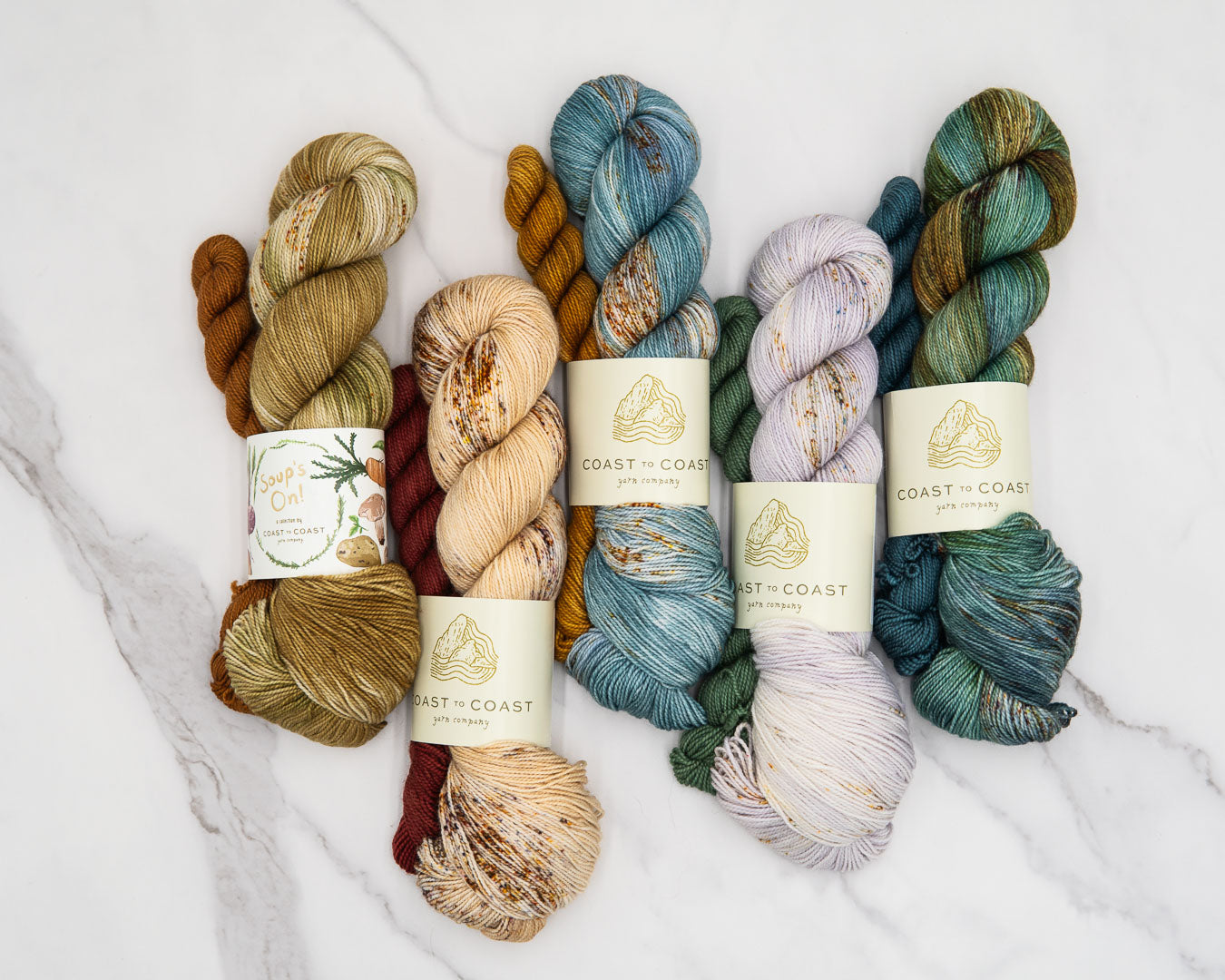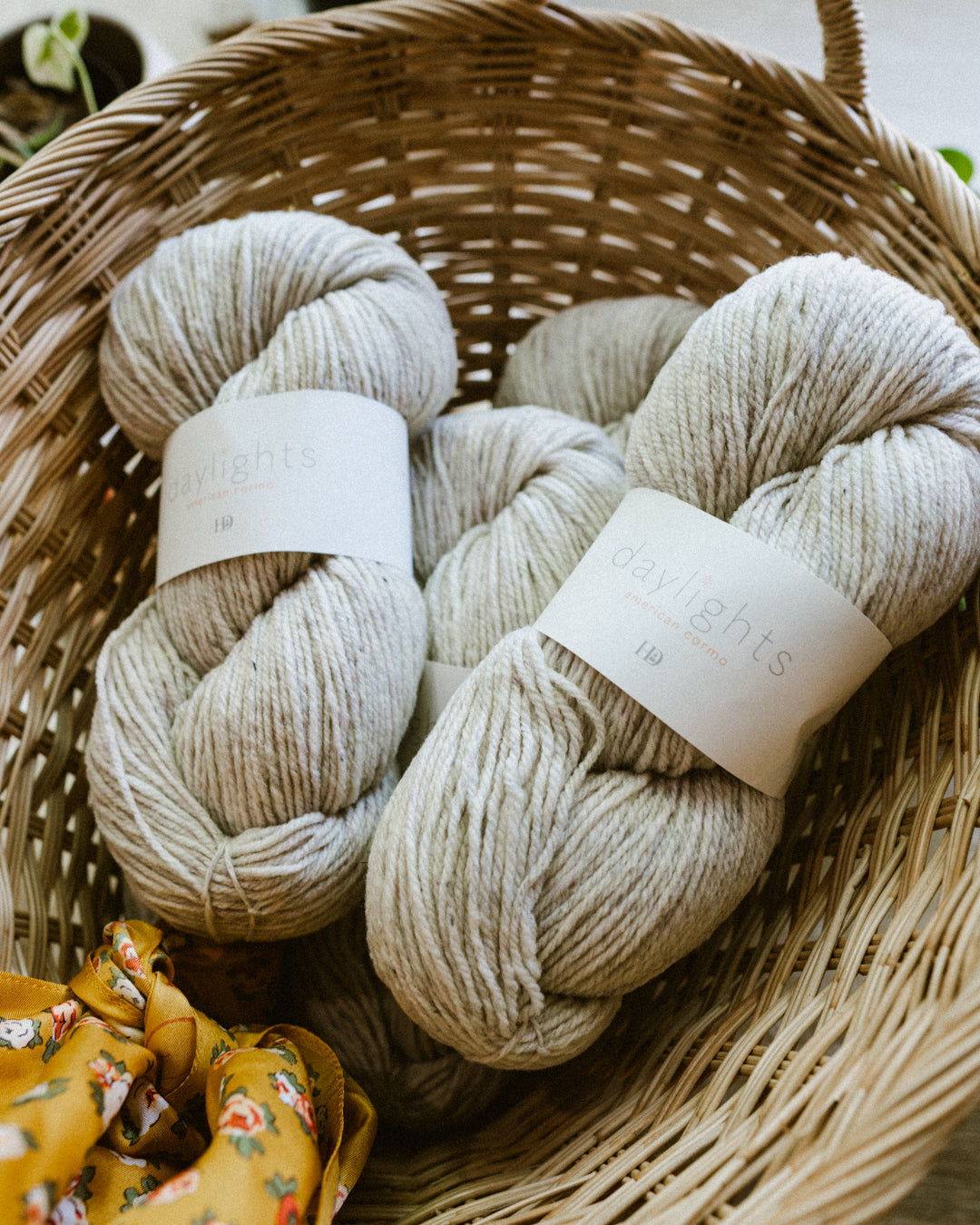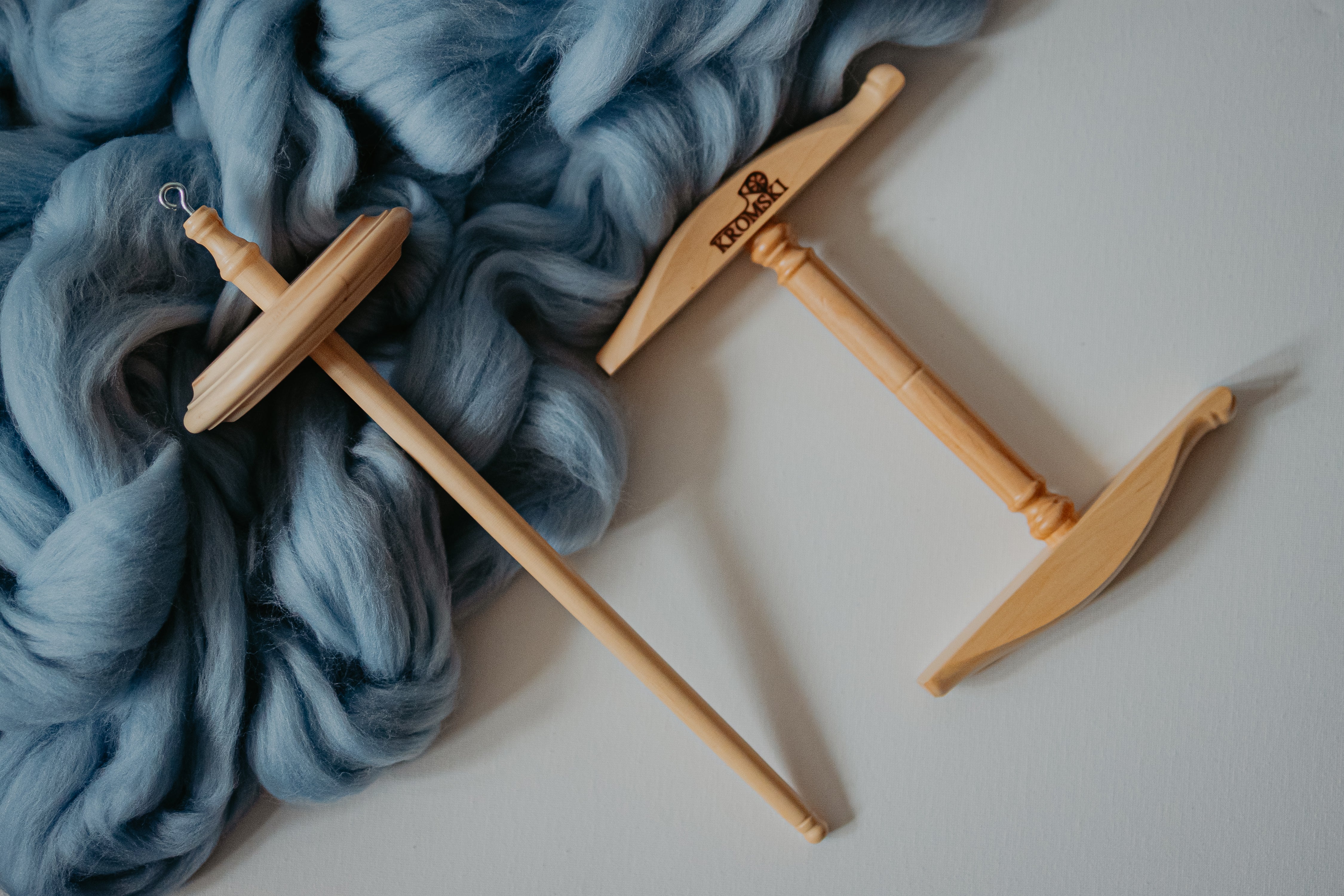
Choosing the best yarn for knitting socks: a complete guide
So, you've started knitting socks. You may have even knit a few pairs already. And now you're ready to take your sock knitting to the next level. You want to make sure that you are knitting comfortable socks using the perfect sock yarn, so that it can last a long time.
So, today let's go over what I think makes the best sock yarn, for everyday socks meant to be worn over and over again. What makes a type of yarn a good choice for a knitter can vary from knitter to knitter. So rather than giving you a straight listicle of what I think are the perfect sock yarn, I'm going to go through some general guidelines. This way, you can choose the right yarn for your lifestyle and needs.
After reading this article, you'll be ready to go forth and make a great choice for yourself, and you'll be so happy you did when you have a finished product that suits your exact needs. From superwash merino wool yarns that are popular on the hand dyed market, to durable, DK weight sock yarns, I have a lot of ideas for you. So let's get right into it!
This blog post contains 1 or more affiliate links which are clearly marked.

Should I use natural or synthetic fibers?
There are so many different things to take into consideration when we are talking about the fiber composition of yarns for handmade socks. So let's tackle these at once.
First, you'll want to consider what kind of climate you live in. Where I am in the Midwestern United States, we get some decent cold weather. We even get some days of snow. So to me, wool socks are an excellent choice. This may seem like a cop out, but I like both 100% wool yarn as well as wool blends that blend natural fibers with synthetic fibers (nylon, in this case). I also equally like superwash yarns vs non-superwash yarns. And this is because they serve quite different purposes in my sock drawer.
Using non-superwash wool yarn for warm socks
Hand-knitted socks using a pure wool yarn will be super warm. The superwashing process smooths out the crimp in the fibers of the wool, which means that they hold less air. So, on the coldest of days, I prefer a 100% non-superwash wool sock over a machine washing friendly yarn. When you're knitting with a non-superwash wool yarn, you'll end up with a little more "prick factor."
Additionally, high-wear spots will slightly felt over time, which actually creates more durable socks. This is great, but you'll need to plan ahead for it--you'll want it to have less negative ease around the heels and toes, and wherever else you typically have heavy wear.
This way, as they slightly felt and shrink, it'll shrink down to the perfect fit. You'll want it to hold its shape after felting, and you may have to experiment a little with this to see what kind of knitting technique and stitch count works best for you.
For non-spinners, I recommend using something like a BFL base or another longwool base which will give you a lot of strength.
Using superwash wool for washable yarn!
However, my kids and I go through a LOT of hand knit socks, and one of the most important factors for us is ease of care. My kids can really make a mess and they need socks that are machine washable, because handwashing sometimes does not get out all the dirt they somehow rub into the yarn.
So in this case, your choice of sock yarn might need to be superwashed, as well as with a nylon blend. A wool blend with nylon will retain a lot of the qualities of the natural fibres, but with added strength, which is a good idea for active little kids.
(By the way, amongst handspinners, there are a lot of beliefs and personal preferences regarding nylon blend yarns. Some folks believe that nylon, which is commonly in a blend of wool [about 80% wool] adds strength and is the best option for sock yarns.)
Still others believe that nylon, being such a strong fiber, can actually slice through the wool in the yarn, which offsets any advantage its strength brings. So take that information and do with it as you will---there are as many opinions on this as there are knitters, in my opinion).
The right yarn blend will be key to knitting socks that give you the best result for a lifestyle.
What if I live in a hot climate?
If you live in a super warm climate, you'll need the right yarn for working "summer socks," or your socks will never make it to everyday wear due to how hot it is. You'll want thinner socks, meaning that you'll likely want fingering weight yarn. Additionally, the most important thing for you will be fiber content. You'll need yarn that has some kind of non-wool natural fiber for real breathability and airflow.
I recommend a sock blend, such as Cascade Cotton Sox, which has a little nylon for strength and bounce back too. Socks knit from fibers like cotton and something like bamboo rayon (a less sustainable option due to the water use and chemical waste produced) have less recovery, and they won't have the same ability to retain their original shape.
Additionally, another reason these yarns are less common for knitters is that the knitting process may be less pleasant as they have less stretch, which means you're pushing against a more rigid stitch as you work. Still, I think that all of these things are a reasonable trade-off for knitting socks you can actually wear in your climate.
What's the ideal thickness of the yarn for sock knitting?

Trusty Sock by Big Little Yarn Co.
To me, the ideal sock is going to be knit from fingering weight yarn. Unless you are willing to overhaul your entire shoe collection. Commercial socks are knit from what we would consider lace weight or even cobweb weight yarn. When we go shoe shopping, we're typically trying on shoes with these socks.
If you are knitting something like a superwash DK yarn for some nice boot socks (one of my favorite types of socks to knit and wear, not gonna lie), you will need to pay attention to whether it'll fit into your boots at all. A bad fit in your shoes will mean more friction during daily wear, leading to your socks wearing out sooner.
Whether you use a thinner yarn weight for socks to be worn out and about or not, I think we can all agree that a thicker yarn, like DK to worsted weight yarn make the perfect pair of socks for wearing to bed or padding around your house without shoes on. There's nothing I love more than thicker socks for around the house, akin to wearing the warmest slippers ever.
How can I make my socks hold up to daily use?
There are a few factors that impact the wear of a sock yarn. They all combine in sometimes unpredictable ways that can result in very different finished socks, so let's go through them one by one.
Pay attention to ply count
First, you'll want something that has many plies, at least 3. The more plies that a yarn has, the more round the yarn will be, and the less they will abrade against each other. If you can find something cable ply, they can be even stronger than 3+ ply yarn. Cable ply yarns ply 2 singles wight extra twist, then they ply them again in the opposite direction.
This opposing twist means this yarn will hold on to its fibers super well, leading to better longevity. We have an organic, cable ply yarn by Neighborhood Fiber Co that is perfect for this, pictured below.

However, most sock yarns on the market will just be regular plied, so definitely try to look for something with 3 or more plies.
Try a breed with longer staple length
A staple length is the length of a single lock of wool straight from the sheep. The most common breed that I see on the market in the US, especially in hand dyed yarns, is merino. While merino wool (especially superwash merino wool yarns) is arguably the most well known wool breed in the world, it is more short stapled, which means that each lock is shorter. This means throughout any given yard of yarn, merino wool has more places of weakness where the ends can start escaping from the twist of the strand of yarn.
If you're having trouble getting your socks to be really hard wearing in daily wear, I recommend a longer staple length breed. One breed that is much less common in sock yarn, yet still accessible is BFL. BFL is a medium wool but still with a smaller micron count (this is a unit of measurement for the diameter of each strand of fiber) than many other medium wools. For most people, it's still next-to-skin friendly while having better durability.
A typical merino sheep will have staple lengths between 2-5 inches, while a BFL sheep typically has staple lengths between 3-6 inches. While I'll always love merino wool yarns for wearing around the house, BFL is gonna be my ideal for boot socks, aka socks that see more wear from outside my house.
Woolen or worsted?
While I love woolen yarn more than anything in the whole wide world, I recommend you choose a sock yarn with worsted construction. Worsted-spun yarn has been carded and combed (rather than just carded), and all the fibers are in alignment. This means that the twist will hold on to those fibers better and you'll get more durable socks. I recommend that you save your woolen-spun yarns for bed socks or garments, and stick to worsted-spun for your sock wool selection.
And now, let's get to a list of some of my favorite yarns to work with for socks!
My favorite sock yarns

Above: Baby Paca by the Wandering Flock.
- An oldie but goodie is any wool sock yarn by Regia. This is a brand that has been around a long time. Their line of nylon-blend sock yarns is known for being super durable. Not only are they machine washable, they probably won't felt on you even if you put them through the dryer. (Still, I recommend you wash all sock yarns in a basin, with cold water, and lay flat to dry.) Regia sock yarns come in 4-ply (fingering weight) and 6-ply (DK) weights so you can knit up a variety of different styles. They are incredibly affordable as well.
- For natural, non-superwashed yarn that's constructed to be super strong, try Rambler by the Wooly Thistle (affiliate link). This yarn is constructed with 80% white Dorset which is a felt-resistant, very durable fiber, and 10% which is another long staple wool.
- If you have sensitive skin or you're after washing machine compatibility, try a superwash merino yarn, like Trusty Sock by Big Little Yarn Co. These stunning hand-dyed hues really add that little extra something for the avid sock knitter. By the way, all sock yarns in our shop are labeled with ply counts so you know exactly what you're getting!
- For the most soft and luxurious bed socks, try Baby Paca, which is a non-superwash alpaca blend, hand dyed by The Wandering Flock. The alpaca means that there'll be less recovery, but it's so soft that I love it for low-impact luxury socks! I find that this yarn is comparable with cashmere blends, but pills far less. Bonus: it's non-superwash which means it will be really warm and the stitches will "stick" together nicely so there's fewer gaps to let the cold in.
- For a unique look, try self-striping sock yarn like those by TinyHumanKnits on Etsy or Mudpunch. They work up just like magic.
My final tip... if you want that beautiful hand dyed look or self-striping yarn, but like me, you need more strength because you wear through socks absurdly fast, I recommend using something stronger like Regia 4-ply in the heel and toes, and other high wear areas for you personally. Another good option is a short row heel or an afterthought heel, which is easy to rip back and repair.
You can shop all of our sock yarns at our Sock Yarn Collection.
I hope this article has given you something to think about and some ideas on how to find a good yarn for your next sock knitting project. You can read all our knitting resources articles for more blogs like this.




Leave a comment
This site is protected by hCaptcha and the hCaptcha Privacy Policy and Terms of Service apply.